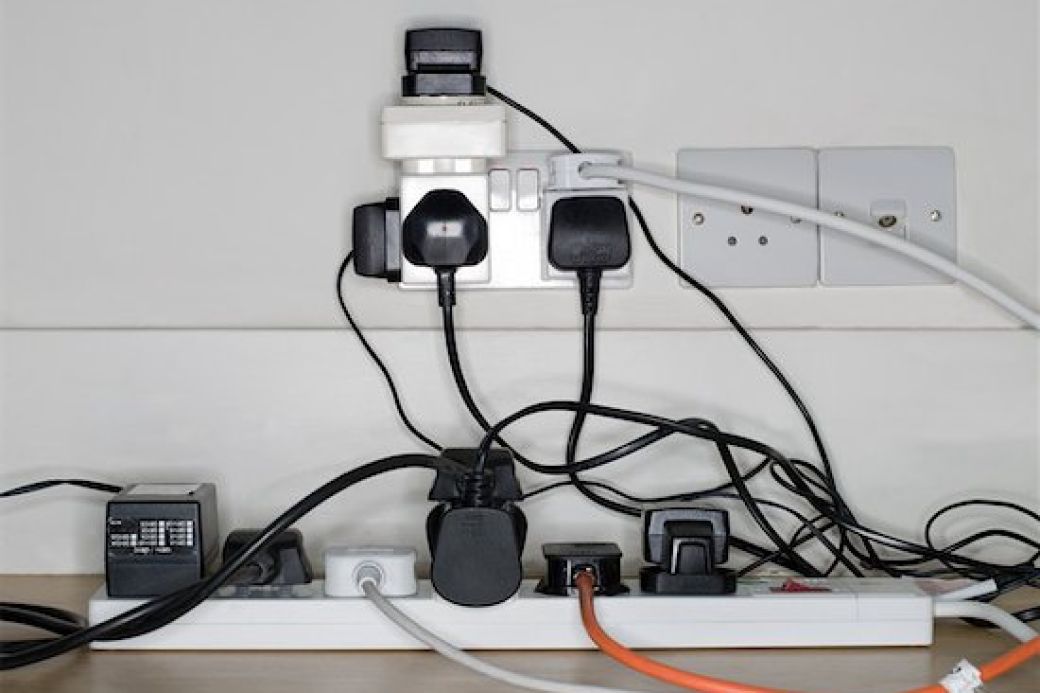The lights come on when you flip the switch, the TV works, and the refrigerator keeps food cold. That means the electrical wiring must be fine, right? Not necessarily. There may be times, especially if your house is more than 40 years old, when you need to upgrade electrical wiring for safety, or because the existing wiring no longer meets your family's power needs.
Rewiring can be a messy and expensive proposition, but with a little upfront planning you can minimize the disruptions and even turn the job into an opportunity to add features that will increase the value of your home.
Safety Issues with Older Wiring
Faulty wiring is the leading cause of residential fires, according to a 2009 study by the National Fire Prevention Association. And the older your house is, the greater the chances that the wiring might be outdated or unsafe.
Old wiring—even knob and tube wiring that dates back to the early 20th century—isn't inherently dangerous, but unless you were around when the house was built, you can't be sure the electrical system is up to code. Plus, materials such as wire insulation can deteriorate over time.
If you don't know when your wiring was last inspected, it's worth paying a licensed electrician to give it a once-over, especially if you have any of these warning signs:
- Breakers that trip or fuses that blow repeatedly
- A tingling sensation when you touch an appliance
- Flickering or dimming lights
- A persistent burning smell from a room or appliance
- Warm, discolored, or sparking outlets
- Two-prong ungrounded outlets throughout the house
- No ground fault circuit interrupter (GFCI) outlets in kitchens, baths, and other areas exposed to moisture.
Another reason to consider upgrading is that some carriers refuse to insure houses with older wiring, or charge owners higher premiums.
Related: Homeowners Insurance: Time for an Annual Check-Up
Be on the Lookout for Aluminum Wiring
Instead of the standard copper wire, many houses built in the 1960s and early 1970s have aluminum wiring, which is considered a safety hazard. "Aluminum wiring connections often loosen up over time," says Greg Fletcher, a master electrician, educator, and author of several books on wiring. "That can cause overheating and possibly fires at receptacles when appliances are plugged in to them." An inspection can determine whether it's safe to leave the wiring in place. Sometimes the addition of copper connectors, called pigtails, at receptacles and circuit breakers can resolve potential problems.
When You Need More Power
Sixty amps used to be the standard for household power. Today, houses often need 200 amps to run air conditioners, flat-screen TVs, computer equipment, and all the other gadgets our parents and grandparents hardly imagined.
Not having enough power isn't just an inconvenience; it can actually damage sensitive electronics. "It's very hard on these devices if the voltage drops off," says San Francisco-based builder Bob Hauser. Even with adequate power, you may need to add outlets to avoid relying on power strips and extension cords, an inconvenience and a potential safety hazard.
Prepare to Open Your Walls — and Your Wallet
Upgrading electrical wiring is a big job, for one simple reason: All the wires are behind the walls. Every house is different and prices vary by market, but for a whole-house rewiring job, you're easily looking at a bill of several thousand dollars. The vast majority of that is the labor involved to get to the wires, run new ones, connect them to every switch and outlet, close up the holes, and clean up the mess.
The easiest time to tackle this work is during a larger remodeling project, such as redoing a kitchen or building an addition, when contractors are knocking holes in the walls anyway. That speeds the process, which can take anywhere from five days to two weeks for an entire house, according to Lansdale, Pa., electrical contractor Wes Carver.
Depending on the circumstances, though, you might not need a top-to-bottom rewiring. Examples are when you need to add circuits to run a new appliance or power an addition like a swimming pool. In those situations, the expense and disruption could be reduced.
Plan Ahead for Future Power Needs
If you're going to spend the money and cut holes in the walls, you might as well run all the wires you can. That way, you'll be ready for any possible future power needs. "There are things to be bought and plugged into a receptacle 10 or 20 years from now that are not even invented yet," says Fletcher.
One smart investment is structured wiring. These are heavy-duty data cables that enable the latest features of TVs, stereo equipment, computers, game consoles, phones, security systems—even Internet-based remote control of house systems like heating and lighting. While a standard electrical upgrade essentially maintains the value of your home, adding structured wiring can increase it. According to a 2009 study by the Consumer Electronics Association and the National Association of Home Builders Research Center, almost 50% of homes built in 2008 included structured wiring, a sure sign of its growing value to home owners.
Here's a checklist of questions to help you determine whether you're due for a wiring upgrade.
